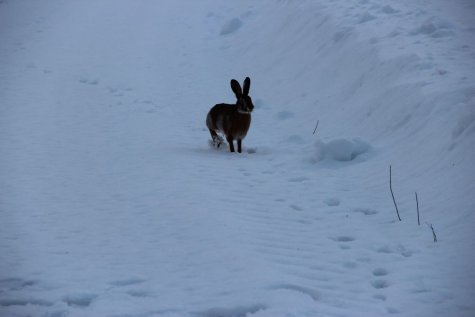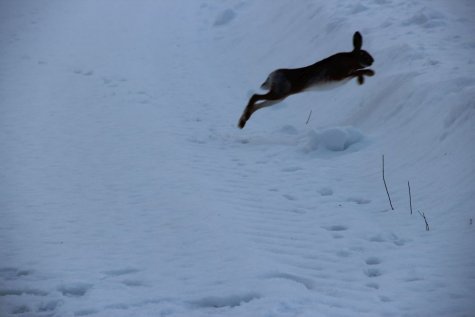Winter doings of hares
Photo Peep Käspre
Translation Liis
European hare
EUropean hare; Brown hare Halljänes Lepus europaeus
Snow is scarce, the winter life of hares that much easier – but they will start pressing into the apple orchards all the same.
In November the European hares wear their winter fur which has quite varying colours and does not offer any particular protective colour in snow. Brown hares spread all over Estonia only in the 18th century. In contrast our native species the mountain hare or white or snow hare is a forest species, has a white coat in winter and has feet where the soles of the paws are covered with hair and thus their tracks are rounder too.
Brown hares start their activities in dusk both in fields and meadows where there are open areas. In daytime they keep hidden, trusting their good hearing and quick feet. In recent years the brown hares are more visible again, and it seems that the low point of the abundance is passing. Brown hares are actually not such very small creatures – body length around 60 centimetres, tail 10 centimetres and the average weight of adults around 5 kilos. The females by the way are just a little larger.
Brown hares start their mating already in February, several males can be running after a desirable female and brawls between them are rather common at this time, ending with torn coats and ears, and when the wounds heal, with a scarred face.
If you send us photos from the mating period of hares or of traces of their doings we can discuss the springtime doings of our long-ears a little more in detail.










